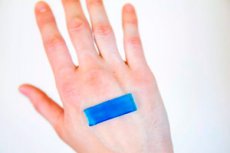New publications
Scarless wound healing is possible
Last reviewed: 02.07.2025

All iLive content is medically reviewed or fact checked to ensure as much factual accuracy as possible.
We have strict sourcing guidelines and only link to reputable media sites, academic research institutions and, whenever possible, medically peer reviewed studies. Note that the numbers in parentheses ([1], [2], etc.) are clickable links to these studies.
If you feel that any of our content is inaccurate, out-of-date, or otherwise questionable, please select it and press Ctrl + Enter.

Researchers from the Helmholtz Centre in Munich are beginning to develop a new method for scarless wound healing.
Previously, scientists believed that the probability of restoring skin damage without scarring was too low, since it required rather complex techniques that worked at the cellular level. Today, doctors have changed their minds and believe that modern technologies are quite capable of dealing with this revolutionary problem.
The European organization ERC plans to invest approximately two million euros in the ScarLessWorld project expedition, which will be launched under the leadership of Professor Yuval Rinkēvičs, in the coming years. “People have always sought to realize the possibility of tissue and organ regeneration. And it is a little strange that this area is currently not studied to an adequate extent,” says Professor Rinkēvičs, who heads the scientific group for the cellular treatment of chronic lung pathologies.
The staff of the Institute of Lung Biology, headed by the professor, recently made a new discovery known. Thus, the specialists discovered that fibroblasts – connective tissue structures involved in wound healing – are not a homogeneous substance, but at least four types of cells, each of which affects the formation of scars in its own way.
"For example, when the skin of an embryo is damaged, regeneration occurs without a trace. But in an adult, after the wounds heal, scars always remain," says the professor.
Further experiments led to the discovery of heterogeneity of skin fibroblasts. The number of regenerating cells decreases over the years, while the number of scar-forming structures, on the contrary, increases. When embryonic fibroblasts are transplanted into damaged tissues of an adult rodent, scar formation occurs almost unnoticeably, scars do not form. Based on this discovery, scientists began to think about developing a method for scarless tissue restoration for subsequent implementation in clinical practice.
The expedition work announced by the researchers involves compiling a complete list of skin fibroblasts, determining their importance in the regeneration mechanism, identifying genes responsible for wound healing and scar formation, as well as clinical testing with subsequent practical implementation of the new technology.
"Currently, methods for preventing the formation of coarse scars - in particular, after burns - are very limited. If the discovery is considered successful, it can be used to treat not only wounds and burns, but also pulmonary fibrosis, which also involves tissue scarring," the experts say.
Information is presented on the NCBI resource page
